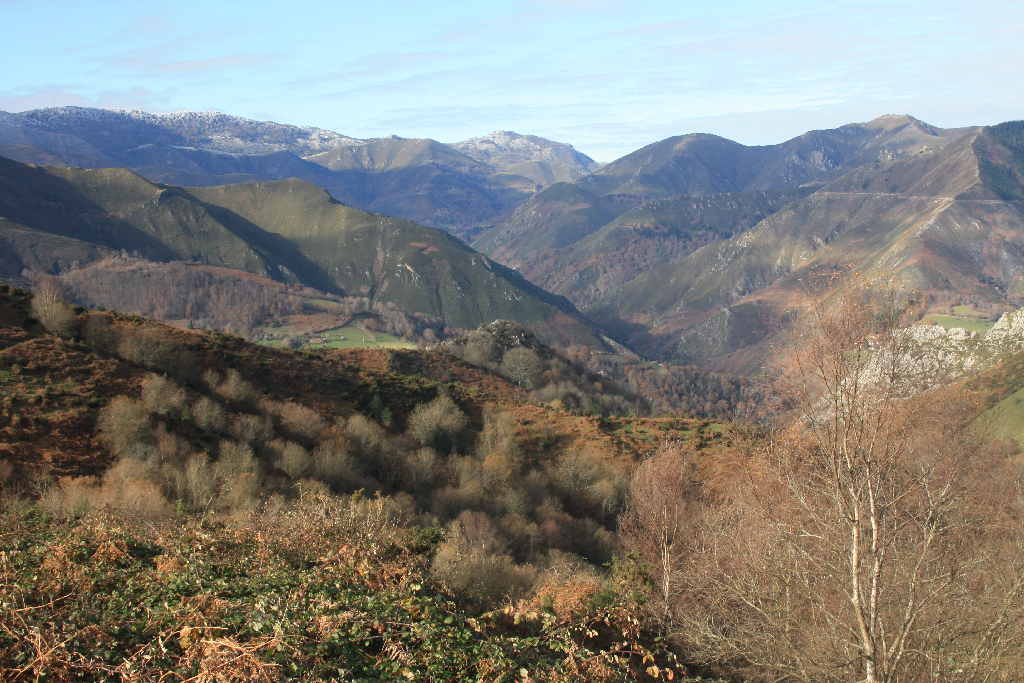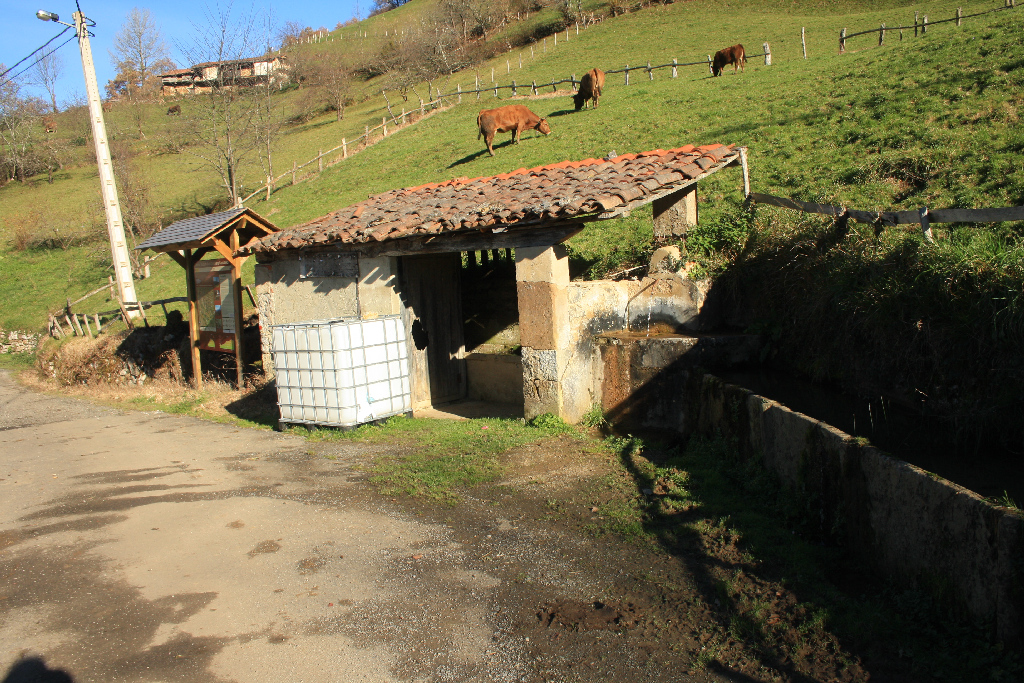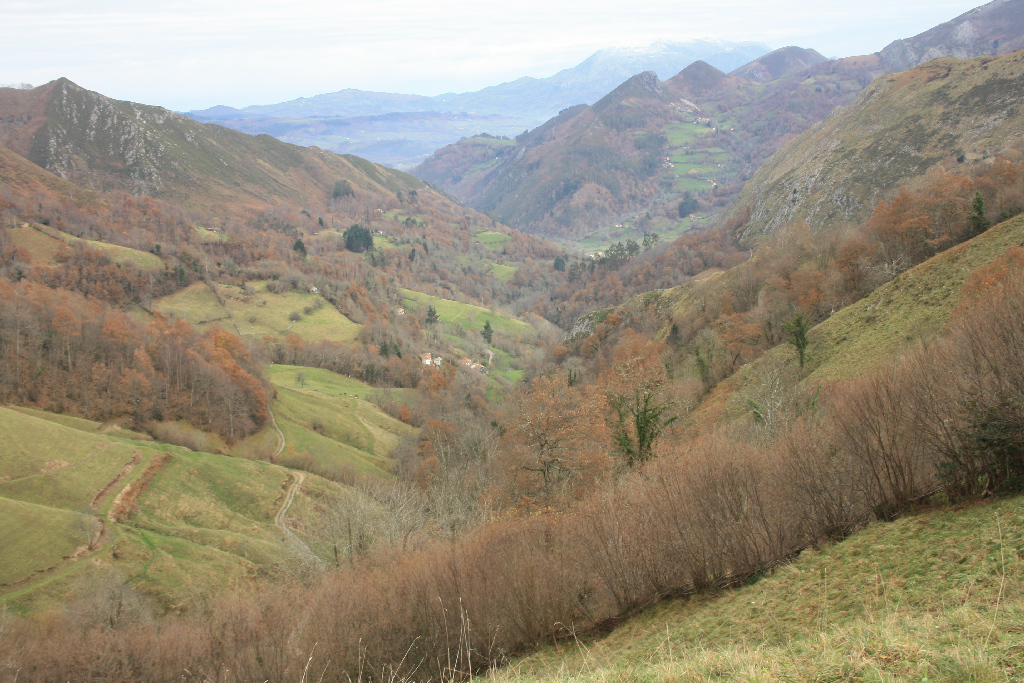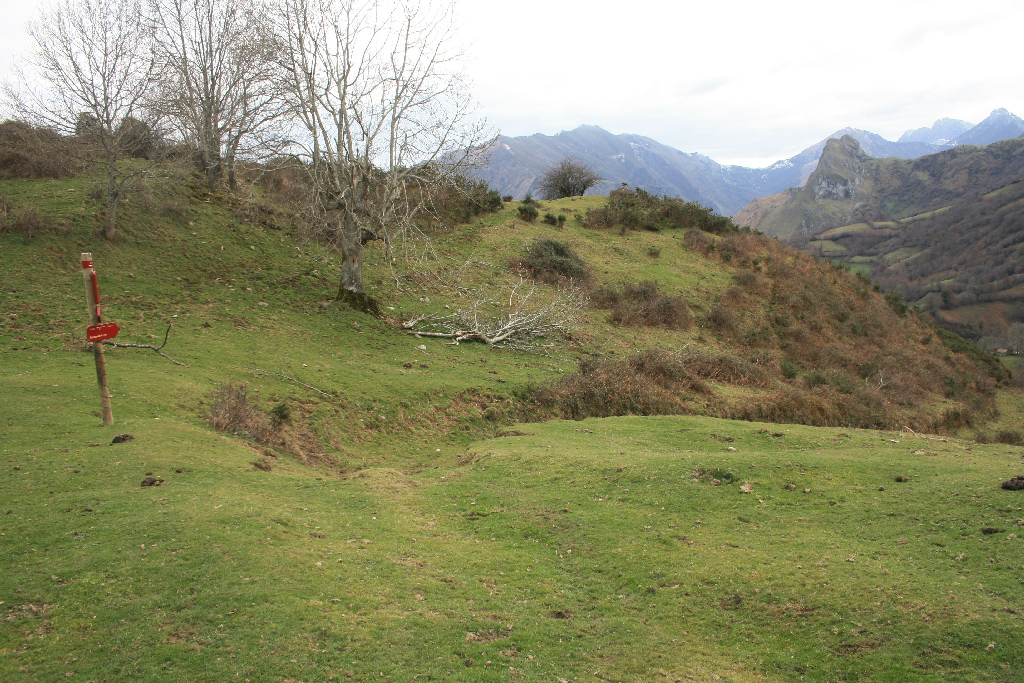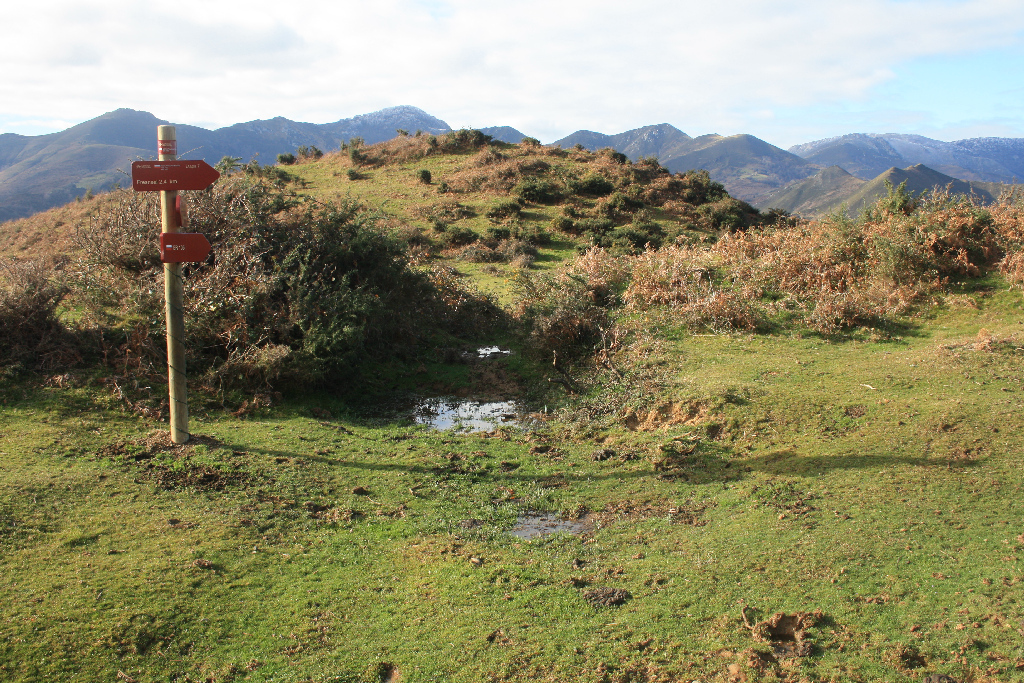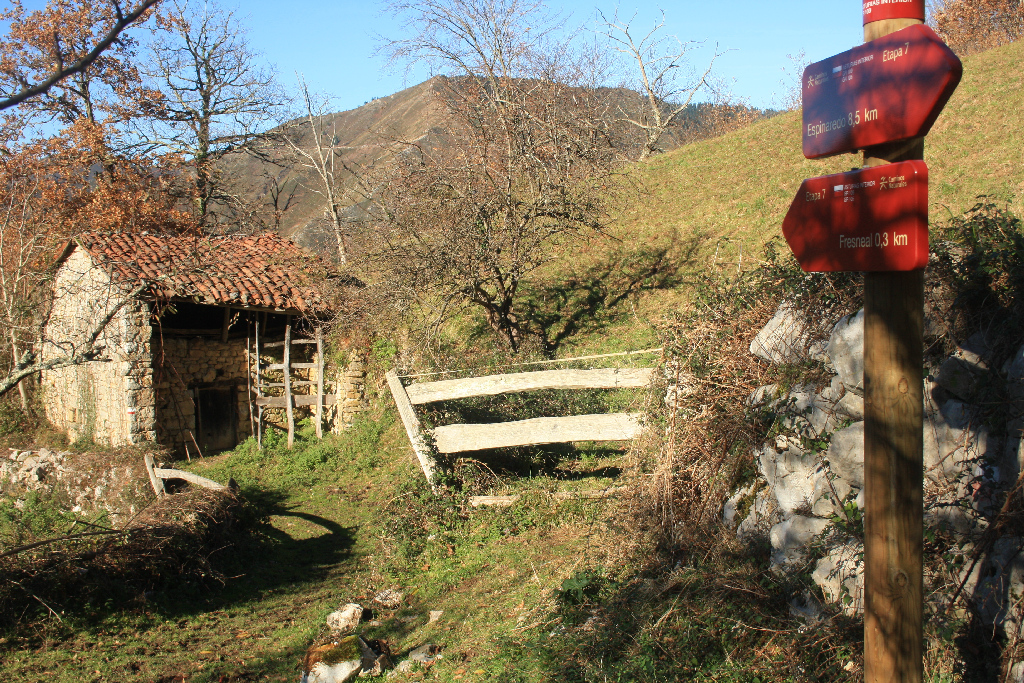- Home
- Rural Development
- Nature Trails
- Nature Trails
- Northwest Sector
- Cordillera Cantábrica. Asturias interior
Stage 7: Espinaredo - Fresnedal
Description

Across Sierra del Sellón
Through ash, oak and chestnut forests, the Nature Trail crosses County Piloña, from west to east, along a path with magnificent views of Sierra del Sellón, to the small village of Fresnedal, overlooking the La Marea River Valley.
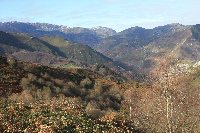
The Nature Trail begins in Espinaredo, next to the church of Nuestra Señora de las Nieves, and crosses the bridge over the River Espinaréu, past houses and “hórreos”, following the directional signs, until it crosses over the irrigation ditch of Sotu, towards a narrow road out of town.
The route climbs through meadows and groves of ash (Fraxinus angustifolia), oak (Quercus robur), chestnut (Castanea sativa) and an occasional holly (Ilex aquifolium), a species included in the Principality of Asturias List of Protected Flora Species. During the climb, the road leading to the town or Rozapanera appears to the left. The route continues to the village of Omedal, with fantastic views of the Sotu River Valley.
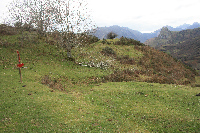
Once in Omedal, the route continues along a narrow path that skirts around a stone trough. This dirt and stone path runs through oak and chestnut groves, past meadows and stone huts. It then begins a steep climb towards Collada del Sellón, in Sierra del Sellón, where the ruins of the eponymous shrine can be found, as well as a thematic table with descriptions of the panoramic view that can be seen from here. Only a few walls remain of the former shrine of Sellón. Nearby was an inn or a hospital that cared for travellers and livestock alike.
Here, the route runs along the same path as the GR-102 for about 200 m, first on the right, then on the left. The route then heads through meadows and heath-gorse formations, leaving behind the village of El Moro de Arriba. It traverses a narrow, cobbled flat area, then descends gently between the hazel trees that line the path.
In the last stretch of this section, the path veers onto the road at the edge of Fresnedal. Once in the village, the end panel can be found next to a stone basin.
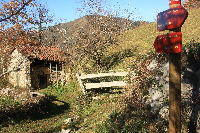
The small hamlet of Fresnedal or El Fresnedal, with just 35 inhabitants, belongs to the parish of La Marea. It overlooks the La Marea River Valley, in Sierra del Sellón, from an altitude of 500 m. It has a modern chapel dedicated to San Antonio that replaced the now-defunct shrine that stood nearby. Livestock farming and, to a lesser extent, agriculture are the main resource of the inhabitants, who drive their herds to summer pastures like Rasu in Sierra del Sellón, where cattle graze and are kept in pens. Fresnedal is situated in the so-called Pilgrimage Route (GR-105), which starts in the centre of the region and ends in Covadonga.
Sites of interest
Profile
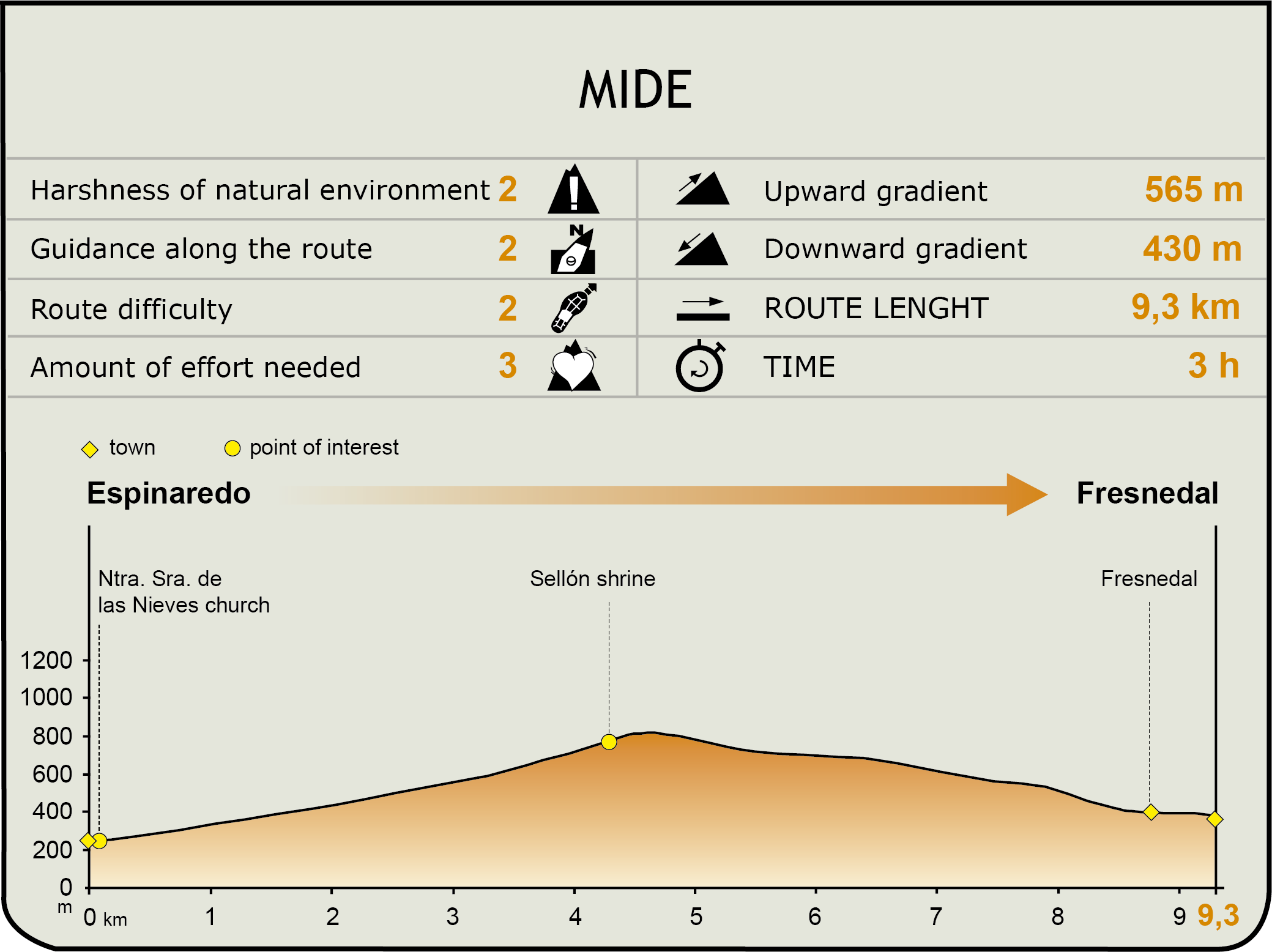
MIDE (Method for the Information of Excursions)
Featured
Further information
Hazel (Corylus avellana)
There is no shortage of hazel trees in the Asturian landscape. Both the timber and nuts are of great value in Asturian cuisine and economy. In recent years, Asturian hazelnuts have suffered a major setback due to low market prices. They have remained hidden in the landscape for lack of interest in its production and marketing.
However, in some areas, such as Piloña, there is renewed interest in the hazelnut, which is being redefined as a symbol. Trade is being promoted through initiatives such as the Hazelnut Festival, which has become an emblematic two-day hazelnut trade fair, surpassing other counties with a long-standing hazelnut tradition, such as Aller, Teverga, Belmonte, Grado, Quirós or Allande.
Camino Real de Sellón
The Camino Real de Sellón was used for many centuries by travellers, armies and traders to travel from the central coast of Asturias to León, through Counties Piloña and Caso. It starts in Tarna Mountain Pass, where the roads to Porma and Esla meet, then descends along the River Nalón and climbs to Collada de Arnicio, near County Piloña.
In Arnicio, the Camino Real leaves the River Nalón basin behind, and ventures into the Piloña River watershed in County Caso, to continue towards the north side of Pico Facéu. From here, the road descends to the Friero River basin, along whose right bank is the Venta de Friero. The church of Santa María de Friero was located in Friero in the 14th century; however, it was moved to the nearby village of Tozo in the eighteenth century.
Skirting the slope of Facéu, the road heads to Llinar and, from there down to La Llamosa, to end in Sellón, where the ruins of a historic church dominate the El Infierno River Valley. Leaving Sellón behind, the Camino Real traverses Las Muezcas, and descends towards Infiesto, the capital of County Piloña.
Redes Nature Park
South of County Piloña, in the central-eastern section of the Cantabrian Mountains, and very close to the Nature Trail, is Redes Nature Park. It is a mountain area between counties Caso and Sobrescobio, that occupies about 37,803 hectares. The terrain is steep and rugged, with altitudes ranging from 2,104 m at Pico Torres to 350 m at the River Nalón, the lowest point.
Water resources play an important role in the Park. The largest river in the Cantabrian coast, the River Nalón, whose basin drains water from nearly 4,900 km2, rises in Redes. Softer substrates, such as shale and sandstone, have allowed the watercourses to carve out narrow valleys, which open onto lower areas of the basin, creating vast fertile plains.
The extension of its forests makes this region the richest in forest lands, predominantly beech (Fagus sylvatica), which populates more than a quarter of the Park. The remaining trees species are mainly sessile oak (Quercus petraea), birch (Betula celtiberica) and Pyrenean oak (Quercus pyrenaica). Also noteworthy is the presence of chestnuts (Castanea sativa), hollies (Ilex aquifolium) and yews (Taxus baccata).
Redes Nature Park is also home to fine examples of animal species typical to the Asturian mountains. The bear (Ursus arctos), grouse (Tetrao urogallus), wild boar (Sus scrofa), chamois (Rupicapra pyrenaica parva), roe deer (Capreolus capreolus) and deer (Cervus elaphus) still survive in this area. A species in Redes, which undoubtedly adds value to the Park, is the Casina or Asturian cow, an endangered breed indigenous to eastern Asturias.
